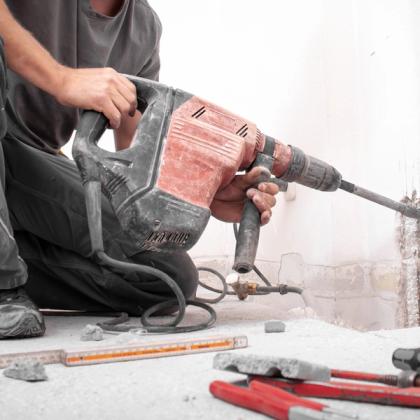Hand–arm vibration syndrome (HAVS) is a chronic, progressive disorder of the upper limbs resulting from prolonged exposure to vibration. It encompasses vascular, neurological and musculoskeletal injury, often presenting with a combination of symptoms that may severely impact daily functioning and quality of life. This condition was historically observed among forestry workers and miners but now affects people in a broad range of industries, including construction, engineering, vehicle maintenance and utilities. In this episode, Dr Roger Henderson looks at how to recognise the condition in patients, as well as diagnostic tests, treatment options and prognosis.
Key take-home points
- HAVS is a chronic, progressive disorder of the upper limbs resulting from prolonged exposure to vibration, primarily caused by repeated and sustained use of vibrating handheld tools.
- Factors influencing its development include the intensity and frequency of the vibration and the duration of daily and cumulative exposure.
- More than 2 million people in the UK are at risk of developing HAVS.
- Clinically, HAVS is characterised by a combination of neurological and vascular features, often accompanied by musculoskeletal manifestations.
- Neurologically, patients frequently report numbness, tingling and pain in the fingers and hands.
- The vascular changes are a form of secondary Raynaud's and are a hallmark of HAVS.
- Diagnosing HAVS relies on a combination of clinical assessment and a detailed occupational history.
- Physical tests used in a diagnosis of HAVS include the cold provocation test, Allen’s test, Doppler ultrasound and thermography.
- The management of HAVS is multifaceted, with an emphasis on early intervention and prevention of progression. The most critical step is the elimination or reduction of exposure to vibration.
- Pharmacological treatment has very limited efficacy. Calcium channel blockers may offer modest relief from vascular symptoms, particularly in cases where Raynaud’s-like features are prominent.
- In very early cases, symptoms may improve or even resolve entirely once there has been cessation of exposure.
- In more advanced stages, particularly where sensory deficits or musculoskeletal deformities are present, the damage may be permanent.
Key references
- Health and Safety Executive. https://www.hse.gov.uk/vibration/hav/index.htm.
- Nieradko-Iwanicka B. Reumatologia. 2019;57(6):347-349. doi: 10.5114/reum.2019.90364.
- Shen SC, House RA. Can Fam Physician. 2017;63(3):206-210.
- Poole CJM, et al. Int Arch Occup Environ Health. 2019;92(1):117-127. doi: 10.1007/s00420-018-1359-7.
- Aarhus L, et al. Occup Med (Lond). 2019;69(3):215-218. doi: 10.1093/occmed/kqz029.
- Vihlborg P, et al. J Occup Environ Med. 2022;64(3):197-201. doi: 10.1097/JOM.0000000000002451.
Create an account to add page annotations
Add information to this page that would be handy to have on hand during a consultation, such as a web address or phone number. This information will always be displayed when you visit this page
